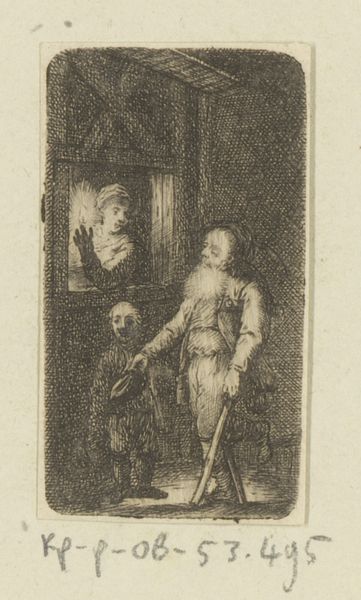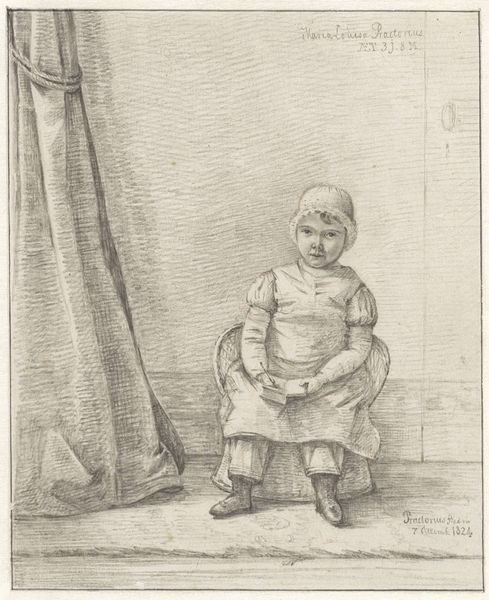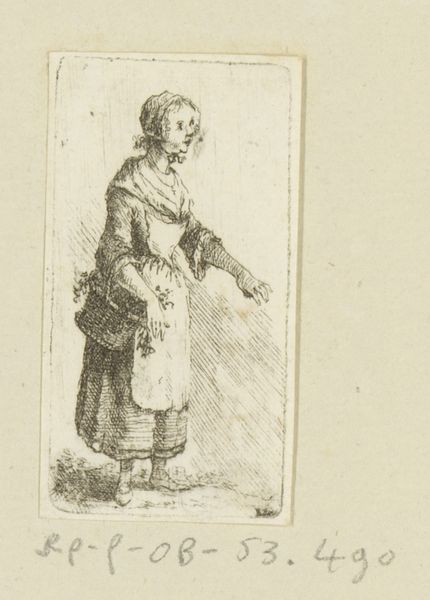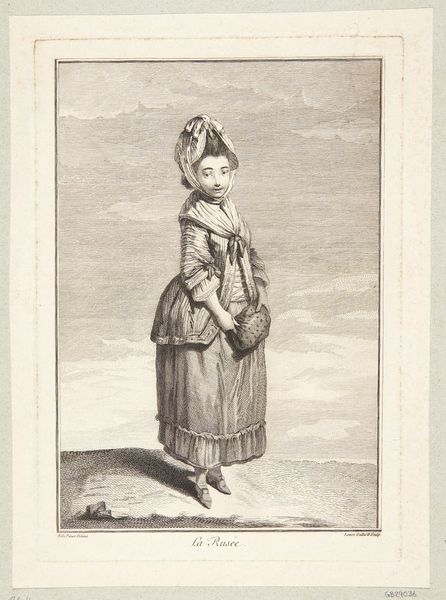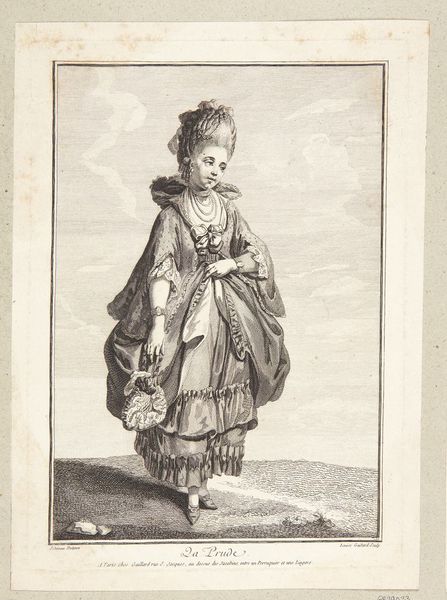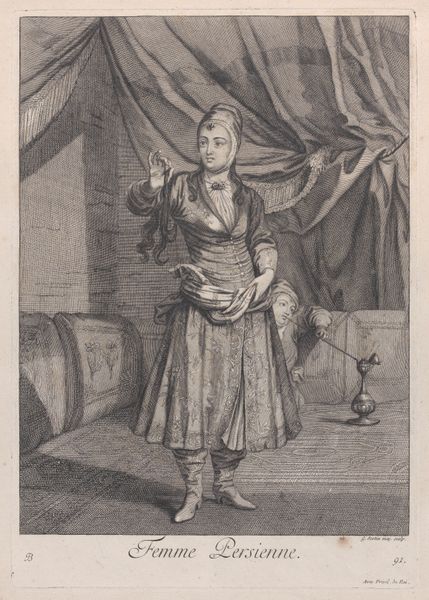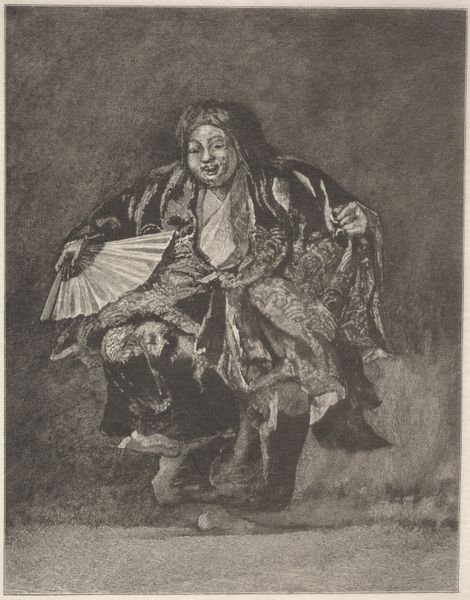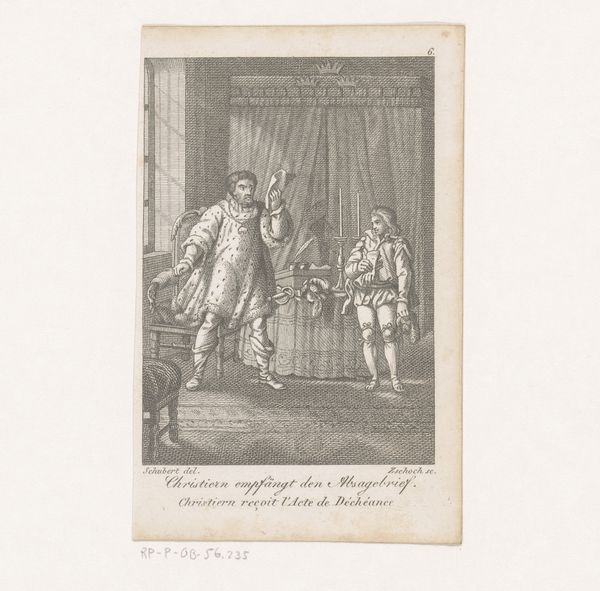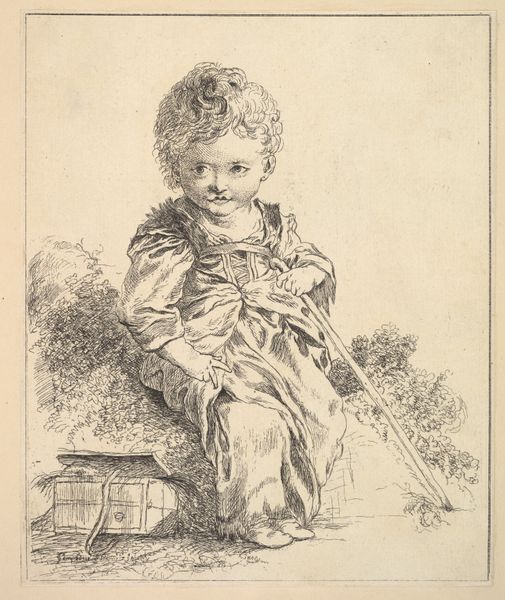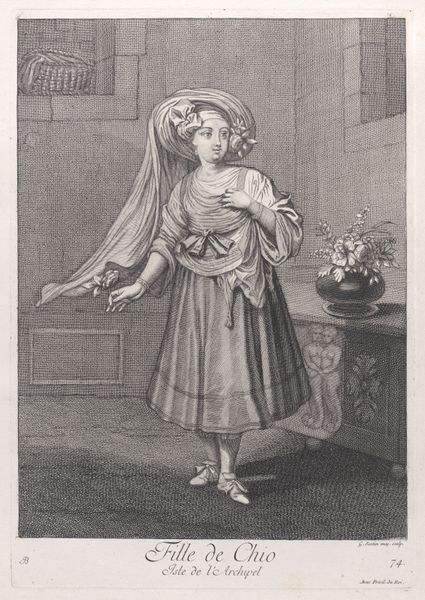
Portræt af stående dreng i jagtudstyr; t.v. bord med jagthat og langløbet gevær. Prins Peter Carl Ulrich? 17th century
0:00
0:00
drawing, coloured-pencil, charcoal
#
portrait
#
drawing
#
coloured-pencil
#
baroque
#
charcoal drawing
#
coloured pencil
#
genre-painting
#
charcoal
#
watercolor
Dimensions: 120 mm (height) x 86 mm (width) (bladmaal)
Curator: Standing before us is "Portrait of a Standing Boy in Hunting Gear," a work tentatively attributed to Jürgen Ovens, dating from the 17th century. It is rendered in colored pencil and charcoal. Editor: It's remarkably somber for a portrait of a child. The muted palette lends a certain gravity, and the stark lighting highlights the textures of the boy’s garments. The whole composition has this muted affect with the blacks and grays creating a moody picture. Curator: Indeed. Child portraits in the Baroque era, especially those of noble children, were often laden with symbolism of power and lineage. The hunting equipment signifies status and privilege, representing the right to engage in pursuits unavailable to the common person. We can ask if children should be depicted that way. Editor: Notice how the artist used charcoal to create a stark and deep background, which makes the colored pencil details on the boy stand out and make a focal point out of him. Curator: This artwork really embodies an important discourse: is it innocent to engage a child with symbols of adulthood, weaponry and clothing associated with adult masculinity. His gesture is stiff. There is a curious juxtaposition when regarding childhood innocence being portrayed with symbols of adult masculinity. Editor: It is interesting to see his youthful features set against the accoutrements of an experienced hunter; especially that the boy is shown to have a baby-like face, very soft. Curator: Looking beyond the central figure, observe the detail given to the hat with feathers to the left and a table that looks draped in rich fabric with, what I suppose, is a gun standing adjacent to the edge of the table. Editor: Those still-life elements also contribute to this feel; everything from the sheen of the fabric on the table, to the texture of the feathers in the hat draws the viewer’s eye. There is an attempt to replicate depth despite the fact that the materials make a fairly flat picture. Curator: Ultimately, "Portrait of a Standing Boy in Hunting Gear" serves as a fascinating portal to the past, prompting reflection on how cultural norms of status are projected through portraiture in both the seventeenth and twenty-first centuries. Editor: An intimate, if slightly unsettling, peek into the aristocratic world of the 17th century. The tonal composition creates a captivating portrayal that extends beyond pure historical representation.
Comments
No comments
Be the first to comment and join the conversation on the ultimate creative platform.


